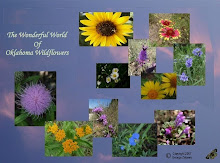
Camera Equipment
Currently using a CCD sensor based, non-DSLR 6MP Sony H2 (SLR like) camera (now discontinued.)
Important specifications
Resolution 6MP
Macro 2cm
Flash Level Adjustment -2.0EV to +2.0EV
Shutter speeds 30 sec to 1/1000 sec
Zoom 432 mm (12x)
Image stabilization
Spot Focus
Spot or center weighted exposure control
Shutter Priority
Aperture Priority
Full manual control
All of the above specifications above, I think, are necessary for descent botanical photos (images). A point and shoot cameras will not work well for photographing small plants and flowers no matter what the mega pixels.
Average settings when shooting plant and flower pictures.
Flash always on
Flash level adjustment set between -2.0 and -1.7
Shutter priority control with shutter set to 1/1000 second
Spot focus on
Center weighted (spot exposure on)
Image stabilization on
Macro always on
What I think.
The Sony H2 has been a wonderful, reliable and durable camera. I have taken many thousands of images and it still shows no signs of problems in spite of being dropped on concrete, sprayed with seawater and fresh water.
It’s time for an upgrade though. This camera works well for flowers 1/4 inch and above. Anything smaller than ¼ are barely useable. The more I shoot the more I notice the smaller flowers and the more eager I am to get quality pictures.
So when do I switch to a microscope. Hopefully never. Currently there are new types of non-DSLR cameras in development and on the market based on the CMOS sensor. These provide images with less noise and more mega pixels than CCD sensor based cameras. Unfortunately, the price is an issue. They are in the price range of a lower end DSLR such as a Nikon D40 with the price of the non-DSLR CMOS based Sony 9MP HX1 around $400.00.
The question is, do you or I get A DSLR or a non-DSLR camera. It's is all a matter of money. For a descent DSLR and good macro lens, the price could easily run over a thousand dollars. The Sony HX1 with good macro lens and good resolution (also does HI Def movies) is 400.00 dollars. There are other non-DSLR brands with similar features on the market.
Recommendations
My recommendation would be "get what you can afford" and if not shooting plants, flowers or extreme close-ups then go for a DSLR such as a Canon or Nikon. If the price is within your range then a DSLR such as Canon or Nikon with good macro might be the answer.
Remember, whatever you purchase make sure, if you want descent plant pictures, that the camera has the capabilities listed above. (more about these features later)
What about me?
At the moment I'm leaning toward the non-DSLR Sony HX1 even though I would love a DSLR with a good macro, price is an issue. My son is currently testing the Sony HX1 and so far it looks very encouraging (resolution wise) especially on the sub 1/4 inch flowers.
Very important
Before you buy. Look on this site, DPREVIEW, Digital Photography Review, for the model you have chosen. They lab test cameras and tell it like it is. I trust them completely. If you do not understand the techno-jargon then go to the conclusion for your particular camera model.
Even though I am using a Sony, I am not promoting, advertising or pushing Sony cameras or products in any way. Sony is the one I happen to use and like at the moment. There are other good competitors out there. Shop around and go to DEPREVIEW and find what suits you.
Hope this helps in your search for a new or better camera but no matter what you are using, have fun and get out there, and shoot, shoot, shoot.
Up With Plants
George Zabawa
















